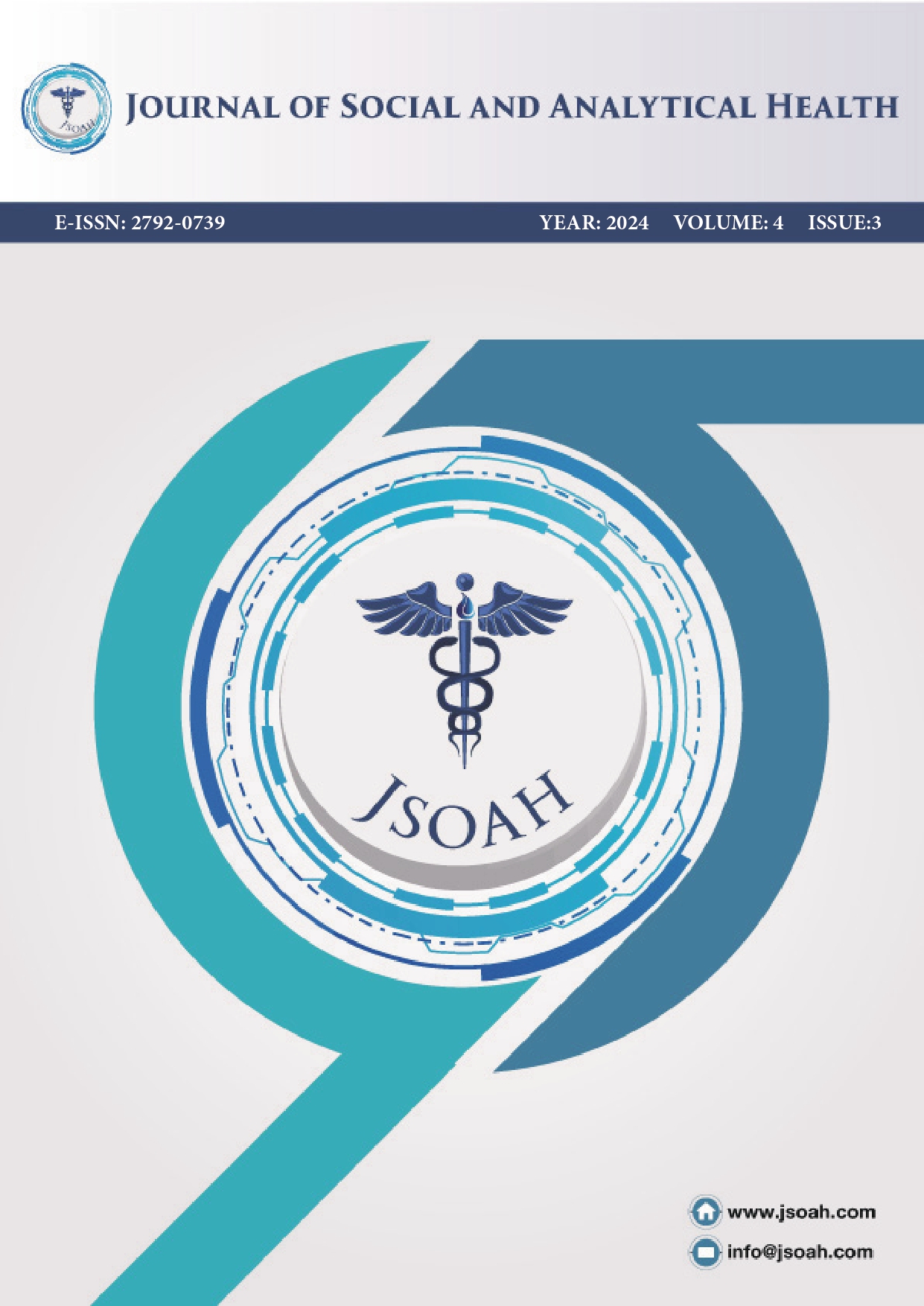Comparison of urine culture and automated complete urinalysis device results: A multicenter study
DOI:
https://doi.org/10.5281/zenodo.13912856Keywords:
Urine culture, urine analysis, bacterial count, leukocyte countAbstract
Aim: The treatment approach of patients presenting to health centers with urinary tract complaints is closely related to the results of urinalysis. In this study, we aimed to investigate the consistency of complete urinalysis and urine culture results of patients admitted to Gulhane Training and Research Hospital and Union of Chambers and Commodity Exchanges of Turkey Hospital laboratories with similar complaints.
Materials and Methods: Urine tests of 218.022 patients
admitted to the biochemistry laboratories of both hospitals
were performed with a Beckman iQ®200 automated urine
analyzer and urine cultures were performed manually.
Results: When all results were compared, urine culture
and leukocyte count discordance was 11.42%, and urine
culture and bacterial count discordance was 6.46%. When
the diagnostic performance of the automated test was
compared with culture results, leukocyte count was superior to bacterial count (leukocyte sensitivity: 91.75%; leukocyte specificity: 87.92%; bacterial sensitivity: 6.45%; bacterial specificity: 98.42%).
Conclusions: When all data are compared, it is thought that
test, device, and human factors affecting laboratory performances are important in the approach to patients presenting for urinalysis.
References
İnan D. İdrar yolu enfeksiyonları. ‘’Topcu WA, Söyletir G, Doğanay M (eds): Enfeksiyon Hastalıkları ve Mikrobiyolojisi, 4. baskı’’ kitabında s. 1356. Nobel Tıp Kitabevleri, İstanbul, 2017.
Lane DR, Takhar SS. Diagnosis and management of urinary tract infection and pyelonephritis. Emerg Med Clin North Am. 2011;29:539-552.
Gülcan A, Çelik G, Gülca E, Cansever Z, Aladağ DM. İdrar yolu enfeksiyonu şüpheli hastalarda tam idrar analizi ve kültür sonuçlarının performans değerlendirmesi. Abant Med J. 2012;1(2): 61-64.
Çeken N, Avcı E. Tam idrar tetkiki ve idrar kültürünün gebe populasyonunda karşılaştırılma. ANKEM Derg. 2019;33(1):6-11.
Betsy Foxman. Epidemiology of urinary tract infections: incidence, morbidity, and economic costs. Am J Med. 2002;113:5S–13S.
Naber KG, Bergman B, Bishop MC, Bjerklund-Johansen TE. Botto H, Lobel B, et al. EAU guidelines for the management of Urinary and male genital tract infections. Urinary Tract Infection (UTI) Working Group of the Health Care Office (HCO) of the European Association of Urology (EAU). Eur Urol. 2021; 40(5): 576-588.
Devillé WLJM, Yzermans JC, van Duijn NP, Bezemer PD, van der Windt DAWM, Bouter LM. The urine dipstick test useful to rule out infections. A metaanalysis of the accuracy. BMC Urol. 2004:2;4:4.
Whiting P, Westwood M, Bojke L, Palmer S, Richardson G, Cooper J, et al. Clinical effectiveness and cost-effectiveness of tests for the diagnosis and investigation of urinary tract infection in children: a systematic review and economic model. Health Technology Assessment. 2006;10 (36): 1-154.
Yüksel H, Kaplan İ, Dal T, Kuş S, Toprak G, Evliyaoğlu O. İdrar kültürü testi gerekliliğini öngörmede tam otomatik idrar analizi sonuçlarının performans. 2014; 5 (2): 286-289.
Çalışkan E, Şahin İ, Öztürk CE, Yavuz MT, Ankaralı H, Türkmen-Albayrak H. Üriner sistem infeksiyonlarının tanısında kullanılan mikrobiyolojik yöntemlerin karşılaştırılması. Klimik Dergisi 2013;26:9-12.
Tekin M, Konca Ç, Almış H, Bucak İH, Genç Y, Gündüz A, et al. Çocukluk çağı idrar yolu enfeksiyonu tanısında tam idrar tetkikinin tanısal etkinliğinin irdelenmesi. İzmir Dr. Behçet Uz Children Hast. Dergisi 2015; 5(2):88-94.
Nys S, van Merode T, Bartelds AI, Stobberingh EE. Urinary tract infections in general practice patients: diagnostic tests versus bacteriological culture. J Antimicrob Chemother. 2006;57(5):955-958.
Amin EK, Abo Zaid AM, I Kotb AER, El-Gamasy MA. Incidence, risk factors and causative bacteria of urinary tract infections and their antimicrobial sensitivity patterns in toddlers and children: A report from two tertiary care hospitals. Saudi J Kidney Dis Transpl. 2020;31(1):200-208.
Spek M, Cals JWL, Oudhuis GJ, Savelkoul PHM, de Bont EGPM. Workload, diagnostic work-up and treatment of urinary tract infections in adults during out-of-hours primary care: a retrospective cohort study. BMC Fam Pract. 2020; 21: 231.
Kaçmaz B, Sultan N. Bakteriüri ve piyüri saptanmasında kullanılan iki yöntemin değerlendirilmesi. Turkish Journal of Infection. 2003; 17: 337-340.
Parlaktaş SP, Bulut Y, Özuğurlu AF. İdrar yolu enfeksiyonu tanısında sediment mikroskopisi ve idrar striplerinin kullanımı: Tanısal değerleri ve idrar kültürü ile karşılaştırılması. Fırat Tıp Dergisi. 2003;8:179-182.
Mohanna AT, Alshamrani KM, SaemAldahar MA, Kidwai AO, Kaneetah AH, Khan MA, et al. The sensitivity and specificity of white blood cells and nitrite in dipstick urinalysis in association with urine culture in detecting infection in adults from october 2016 to october 2019 at King Abdulaziz Medical City. Cureus. 2021;13(6):e15436.
Martinez MHM, Bottini PV, Levy CE, Garlipp CR. UriSed as a screening tool for presumptive diagnosis of urinary tract infection. Clin Chim Acta 2013;425:77–79.
Kaufman J, Temple-Smith M, Sanci L. Urinary tract infections in children: an overview of diagnosis and management. BMJ Paediatr Open. 2019 ;3(1):e000487.
Tunga M, Şen TA, Aktepe, OC, Altındiş M. Üriner sistem enfeksiyon şüphesi olan childrenlarda tanımlayıcı laboratvuar testlerinin idrar kültür sonuçları ile karşılaştırılması. Türk Pediatri Arşivi 2002;37: 150-155.
Milletli Sezgin F, Nar R. Evaluation of urinary culture and urinalysis results of pediatric patients prediagnosed with urinary tract infection. Pamukkale Medical Journal. 2017;10(3):242-248.
Maduemem KE, Rodriguez YD, Fraser B. How sensitive are dipstick urinalysis and microscopy in making diagnosis of urinary tract infection in children? Int J Prev Med. 2019;10:62.
Al-Musawi ZM, Ali Al-Obaidy QM, Husein ZH. The utility of urinary dipstick in the diagnosis of urinary tract infection in children. Biomed Biotechnol Res J 2020;4:61-64.
Downloads
Published
How to Cite
Issue
Section
License
Copyright (c) 2024 Journal of Social and Analytical Health

This work is licensed under a Creative Commons Attribution-NonCommercial 4.0 International License.


